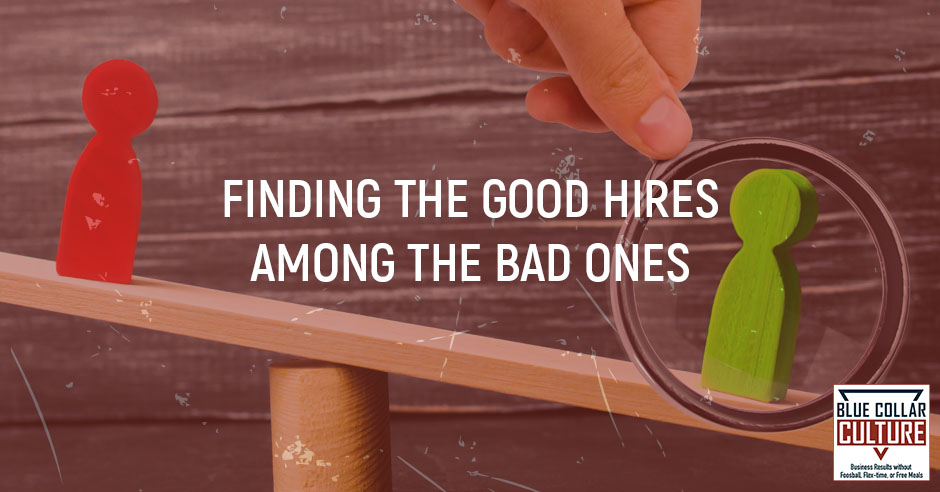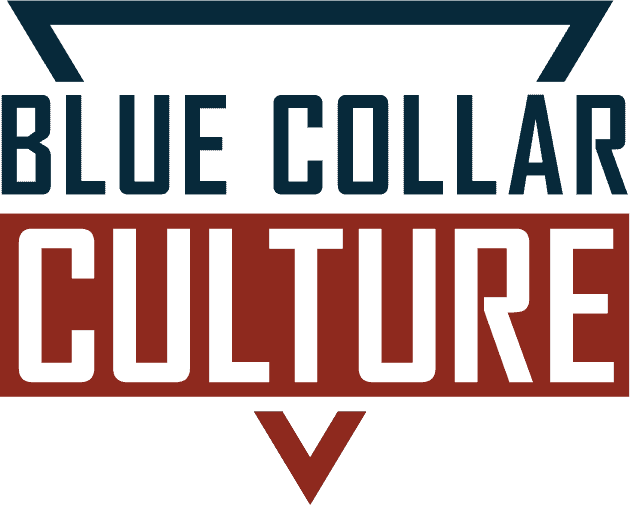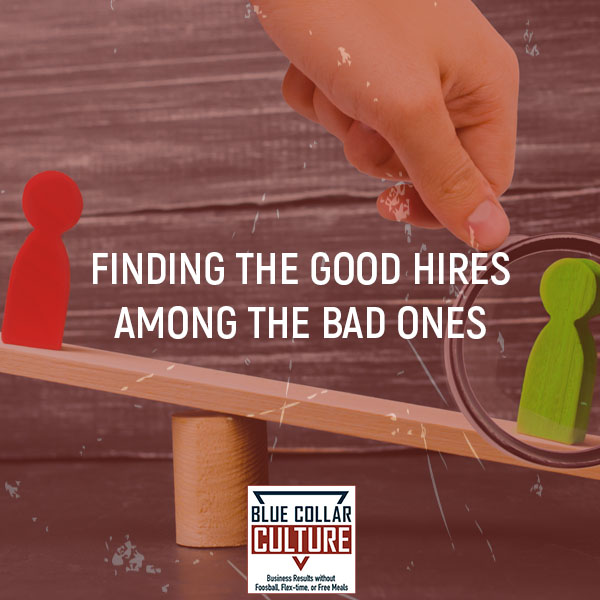
It’s no secret that hiring is one of the hardest challenges businesses are dealing with right now. Not every new employee can be a good A+ player. You will get a bunch of C’s and B’s. Join your hosts, Ryan Englin and Jeremy Macliver, as they talk about what’s working and what isn’t in the hiring process. Find out what it means to be a “good help” so that your business can hire the perfect team.
—
Finding The Good Hires Among The Bad Ones
We’ve got something a little special for you. We don’t have a guest. Jeremy and I are going to sit down and talk about some of the challenges that we are seeing our clients go through when it comes to attracting and hiring good people. It’s no secret that hiring is the number one challenge for most businesses in this country. Nothing is indicating that it’s going to get easier. What we want to do is share a few of the things that we see working and some of the things that aren’t working that we need to stop doing so that you can ultimately find the greatest success in building an amazing team. Jeremy, we are going to talk about finding the right people. One of the biggest challenges business owners have is that not only are they looking for as many people as they can find but when they do show up, they are super disappointed. They are shaking their head going, “Where are these people coming from?” Are you guys seeing that too?

It seems like everybody says, “It’s unique in our industry that we are having that.” I’m working with law firms, roofing companies, tree companies and insurance companies that are telling me that. It’s pretty much, “Which one of these are the unique ones?” Hiring good help seems to get harder and harder as we go along.
There’s a word that you use there that I always think about is good. Good help is what everybody wants because we can all find help. Most of the help makes it more work for us. Let’s focus on that good. When you hear somebody saying, “I need good people. I can’t find good help.” What is it that you are seeing?
There are a couple of things. It’s interesting because it’s rare that they ever mentioned technical skills. There might be a little bit of it. It might be the 3rd or 4th thing when they are frustrated about the interviewers or the applicants are getting. It’s usually they don’t have any drive. They don’t show up on time. They were not a part of the team, disengaged, they job hopped a lot, whatever that may be. Ironically, some of these are in the professional services that were having these conversations. The blue-collar feel like, “It’s because I’m paying such a low rate or it’s such a hard job.” It’s like, “I see people with college degrees that they were still struggling with the same thing.”
It’s interesting because everything you said right there isn’t something we can teach. I wish that there was a quick ten-minute class that I could send everybody to how to get to the worksite on time or how to show up on time for the job. Those things that we can’t teach can be challenging if we are not looking for those things when we are looking for these good people. I look at a lot of job descriptions more than I probably should. Except for the rare exception, they never mentioned these things in the job description. They were just, “Can you turn the wrench? Can you use this software? Can you look at these plans?” That’s the stuff that I see in the job descriptions. One of the biggest areas of opportunity is to get clear on defining good and being clear about that upfront.
What’s the advantage of putting that in a job description? Isn’t everybody going to say they are that?
One of the things about job descriptions is they are an ad for your job. Think about a television commercial, a radio commercial or we all seen internet pop-ups, they are looking to connect with someone at an emotional level. Most people don’t leave jobs. They leave employers. We have all heard this before but what is that mean? If I’m an ironworker and I go to apply to be an ironworker somewhere else, I’m not switching jobs. I’m switching the person that sends the paycheck, which means I’m looking for a different employer. A different employer, I’m hoping has a better culture and treats you better. I have a boss that I like. That emotional and cultural component is so important to job seekers that if we don’t have those things there, they are going to be applying for another job, applying to work somewhere else but not knowing if they are getting what they want out of that new opportunity.
Usually, the things you can't teach end up being the difference-maker between good and bad help. Click To TweetBy putting it out there, the help gets by defining what good is, putting some of those kinds of behavioral things that will be inside the company, is that getting us more applicants or getting us better applicants, what is that doing for us as the employer?
From my perspective, more applicants never solve the problem. We have to focus on quality applicants. I have never met an employee who said, “I want 100 more of the garbage applicants that I have been getting.” They want to be able to find the good ones. When you get more detailed in your job description or your job ad, you are going to limit the number of applications that come in. The upside is they should be of higher quality. That’s our focus. I don’t know about the people you work with but I know a lot especially small business owners. They don’t have time to look at 100 applications. We need to find an opportunity for them to look at 5 and all 5 they want to talk to. Getting clear on the culture and what good means is going to help with that.
It’s like marketing. There are a lot of times there are these whatever network that you could turn on. If you are a service-based company, you will get 200 leads from it. The chance of closing anything is about 1 in 200. I see companies that were hurting. They will go for that because they need to get something but it’s super expensive, not only in money but in time and effort sifting through all that. If they could get five solid leads, it could sell 3 of those 5 and they tripled their sales but they only got five leads versus 200. I have taken a lot of teams through that path on the marketing side. It makes sense. That’s what we would want on the hiring side too.
Another thing about the job description there is the concept of A-players. Are you familiar with that, Jeremy?
I am, but let’s explain it to everybody.
There’s this concept of A-players. They are your rock stars. They show up. They put in a great day’s work. They are productive and profitable. They don’t create drama. You wish you could clone them. I had asked a lot of people, “If you had a magic wand and you could clone, who would it be?” They were like, “It’s this guy.” They know exactly who it is that they would clone. That’s you are A-player. The problem with A-players, this is a good and a bad thing, is A-players like to play with A-players. I don’t know if you have ever been a part of a group project before but I know I have where I pick up a lot of the slack. It frustrates me because I’m doing a lot more work. After all, the team is not contributing.
What happens is it makes my performance go down because I’m working harder to carry the team. Even though I might be an A-player, I start looking like a B or a C player. When you get to C player territory, those are the people that if you could find a good person, you would replace them in a heartbeat. The thing about A-players is they like to play with other A-players. I am not into sports but if you take your favorite sports athlete and you say, “We are going to put you on the worst team.” How well is that going to work out? By being clear in the job description, this is what we are looking for. This is who we are looking for. You can have this tendency to draw A-players towards you because they want to play with other A-players. If they know that you are clear on who you are looking for and if you are following through and hiring those kinds of people, they are going to be excited about the team that they are joining.
I have seen it from a little bit different perspective than what you are sharing there. You are talking about how we put the ad out there, how do we make the pitch to the world. I have also seen it from the insight is we work with the teams on transforming their culture, get creating that accountability, those A-players, when they start believing that they were playing on an A team, they began telling more of their A-players. Something about the first little bit of getting that wheel to turn from C players with a few A-players to an all-star A team, there’s something in that that where you first started doing the heavy lifting but as that momentum builds, the team starts getting less and less tolerant to a C. After a little while they get less tolerant of a B minus and a B. It keeps up in that and then they become way more protective of who you are letting in on the team because they only want A-players and they are willing to go out there and kill it. You are talking about it from the ad side of it but I have also seen it as soon as we get that outside, we will get it coming in right, make better hires and start changing the company. It literally begins to take on a life of its own from that point.
I know you are going to benefit all the way around by making sure that you are engaging these A-players and set them up for success and making sure that they are excited about what they are on. We have talked a little bit about good and what people are looking for. There’s the cultural component and drive component to want to play on a team. Is there anything else, Jeremy, that you see when you are working with leadership teams? They were saying, “How do we get these teams productive?” Are there any things that you can see with the existing team works well when it comes to, “Do we have the right people in the right seats? Are they on the right team?”

The first thing that comes to mind when you asked that question is getting it clear what everybody is accountable for. It’s surprising how many people are out there doing their job all day long. They know what tasks they were supposed to perform but they don’t know what they were accountable for. There’s a big difference there. If I know I’m supposed to show up and do something put these papers over in this bin all day long or fill out these things. They don’t understand what’s the big picture of that and why are we doing that. I find that we get stuff going through the motion. We are frustrated as a leader about the results where we haven’t clearly articulated it.
What I mean clearly articulate it, you probably have job descriptions, I see those often, they have a good, detailed job description, they have all that stuff but all of that employee goes, “What is that?” I encourage the teams to get down to 3 to 5 things. We use EOS. Within the EOS, we are going to build out an accountability chart. Those 3 to 5 things, we’ve got to get clear that these are the things you are accountable for. We create some formal way of measuring what winning looks like with those through a scorecard. That takes that team that’s there and they start defining what winning looks like. Could you imagine if you started a basketball team like, “Our goal is to get the ball in the hoop? Let’s all go get that?”
They were all serious. They were all ready to go. What’s it looks like as a game. It’s chaos. They were all down there trying to get that ball and throw it in that hoop but no one is playing in the other position. You need to do that with your crews and whatever team you have. I see them get to where they have a three-man crew and they will be like, “It’s three positions on this crew. There’s one that’s leading and one is taking care of this part. When we get there, one setting up the safety inspection, one is handling the customer and one is getting the production set up.” Everybody knows their roles. That team is going to maneuver through whatever they are trying to maneuver through faster, especially when they know what winning looks like with it. That begins to protect the back end of a bad hire because when you have teams starting to create that accountability and then somebody comes in that isn’t playing like they should be playing, the rest of the team starts sticking their hands up like, “We are never going to win with this guy.”
I love the way you break that down and being clear on not just, “Here’s the team but here are the rules of the game. Here’s what accountability looks like.” Finding ways to measure it. One of the things I encourage employers to do all the time is if you know how you are going to hold someone accountable and you know what success looks like, put it in the job description. When you put that out there, make that happen. Tell them right up front, “This is what it’s going to look like. This is how we are going to hold you accountable.”
Remember my story back to those A-players, they want to know that you are holding everybody else to the same level of accountability you are holding them. Being super clear and open about that in your job description. No rule says you can’t do that, by the way. I get pushed back sometimes like, “We are supposed to put the skills that they need and those kinds of things.” You can tell people exactly how you are going to hold them accountable. Why wait until they are on the job? That’s not something they can do.
Most people don't leave jobs; they leave employers. Click To TweetThe HR laws helped us to make sure that we are, as a country, have stepped up to the next level and take care of the employees. That’s the intent of it. We want to follow all of those. There are some other opportunities there to share with that employee what’s life going to be like here because they need to be able to self-assess this. It’s not just the employer. They need to look at it and say, “Is that what I want to do with my life? Do I want to work on a team like that?” I believe that post-COVID, this is going to be one of those big transformational changes as we look at the next decade of employment. Before, you hear about the Millennials, I have always believed that the Millennial gap that they had the internet forever. They knew that there were way more job opportunities.
That was the part that we felt like they were asking questions that we were like, “Why are they asking this point?” I believe that that is going to multiply now that we have all gone to this hybrid virtual. I know sometimes, blue-collar feel like they were not in it but I am seeing blue-collar come up with more hybrid, virtual, go directly to the job site, don’t come in, things in 2020. People are going to start looking at there are a lot more options out there and getting clear on, “Where are we going? Why do I want to be part of this team?” We are going to see a lot more of that as we go.
That’s the thing. I have heard you say this many times, Jeremy, I echoed it to spiel and be honest on the pool. The internet is made so the information can transfer fast that if you are not and you are struggling with turnover or you are hiring people and then three weeks later, you are firing them or they were walking off the job site because they didn’t get what they thought they were going to get, word gets out. Word spreads pretty quickly. The internet has made it so easy for job seekers to be able to move on to look for something that looks a little bit better. If you are not open, honest and you are not properly setting expectations, and then meeting those expectations, you are going to struggle with this entire process for a long time.
Jeremy, I enjoyed this. We could talk about this forever. There are a lot of opportunities out there. I truly believe that good people are out there, you have just got to go find them. I would love to do if we have an opportunity to do this again is why don’t we get together and talk about some of the interview questions that you should be asking to validate that the people you are talking to are the right ones. We should do that in a future episode if you are cool with that.
That would be fun.
Thanks, Jeremy. I enjoyed it. For the readers, if you want to get some more information about this, go check out BlueCollarCulture.com. We’ve got a bunch of resources out there for you. You can download a copy of our book, which is on interviewing so that you hire the ones you won’t want to fire. We’ve also got some other worksheets and things that you can check out. Share this with anybody that you know that is struggling to hire, especially if they are in the trade. This is going to be a resource for them. Thanks, Jeremy.
Thank you, everyone.
Important Links:
- Book – Unmasked
Love the show? Subscribe, rate, review, and share! https://bluecollarculture.com/podcast/

